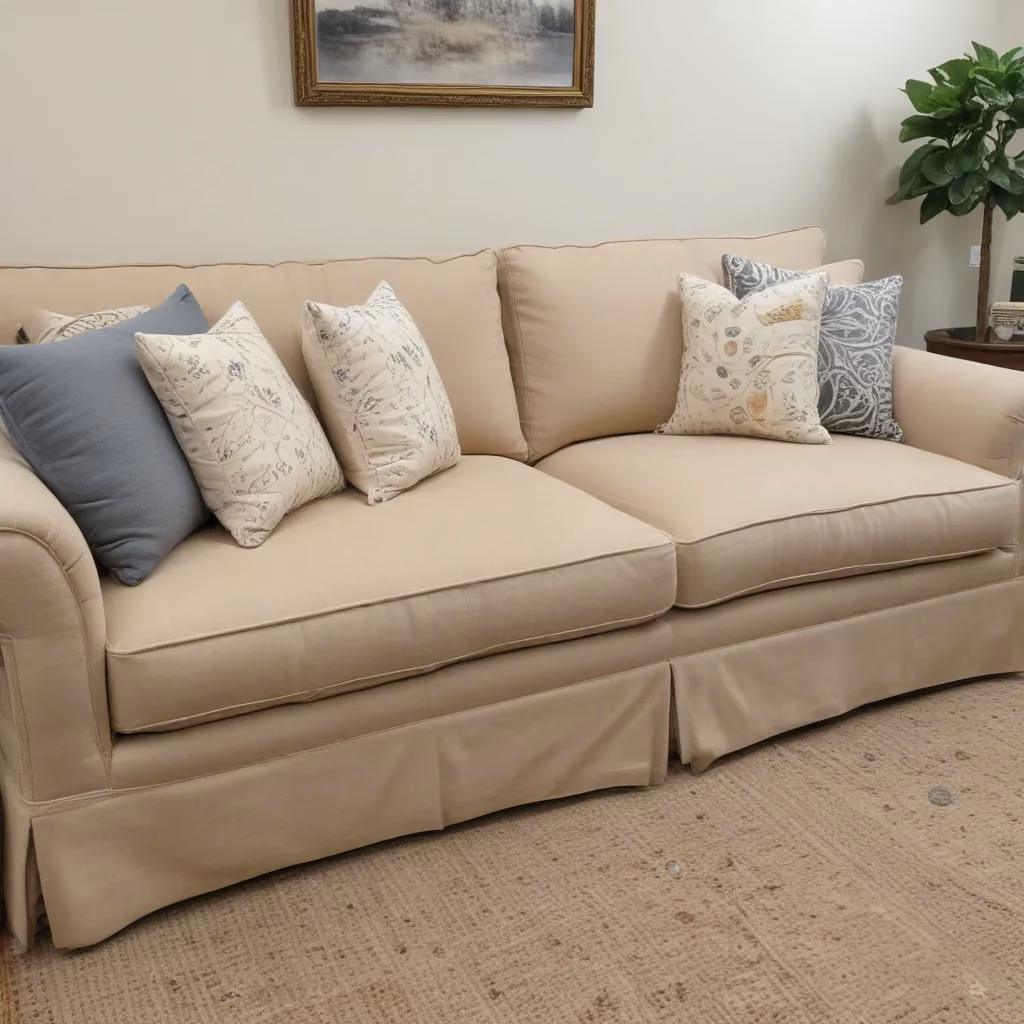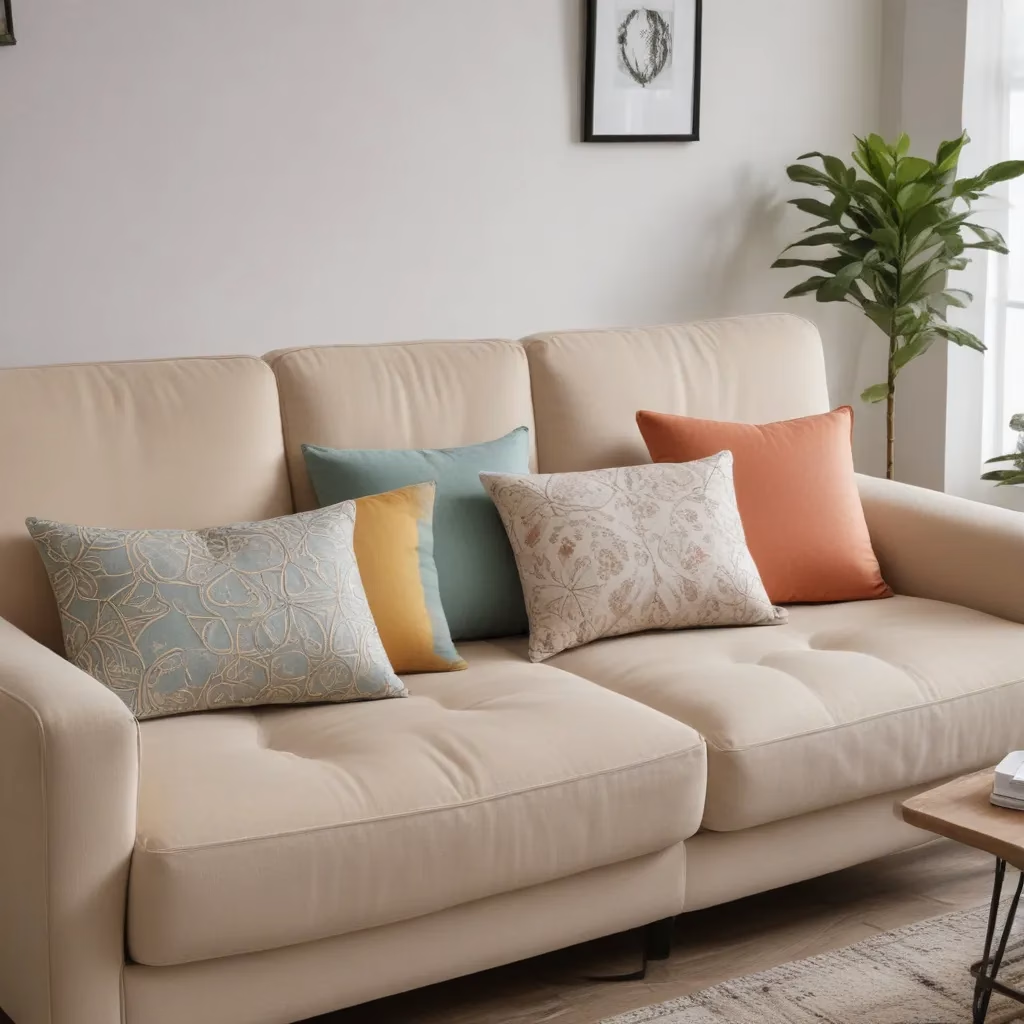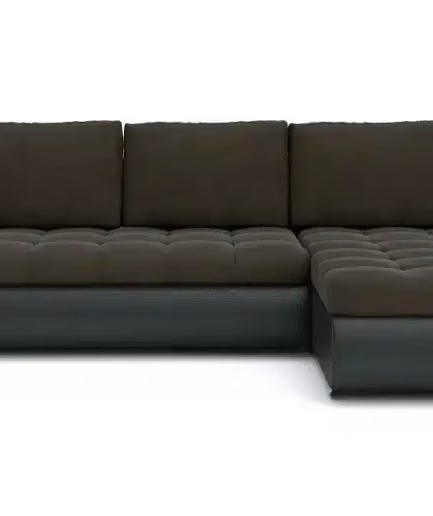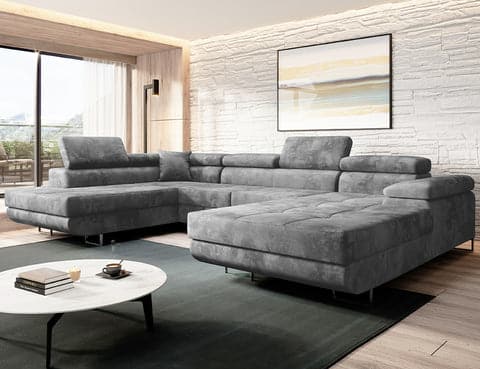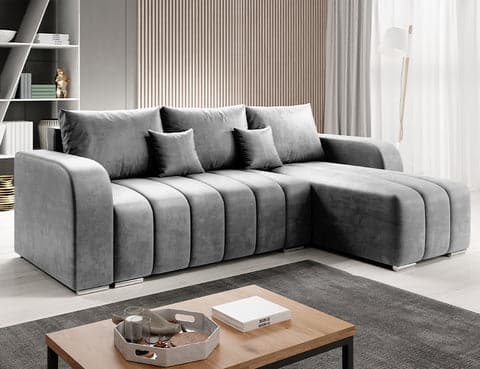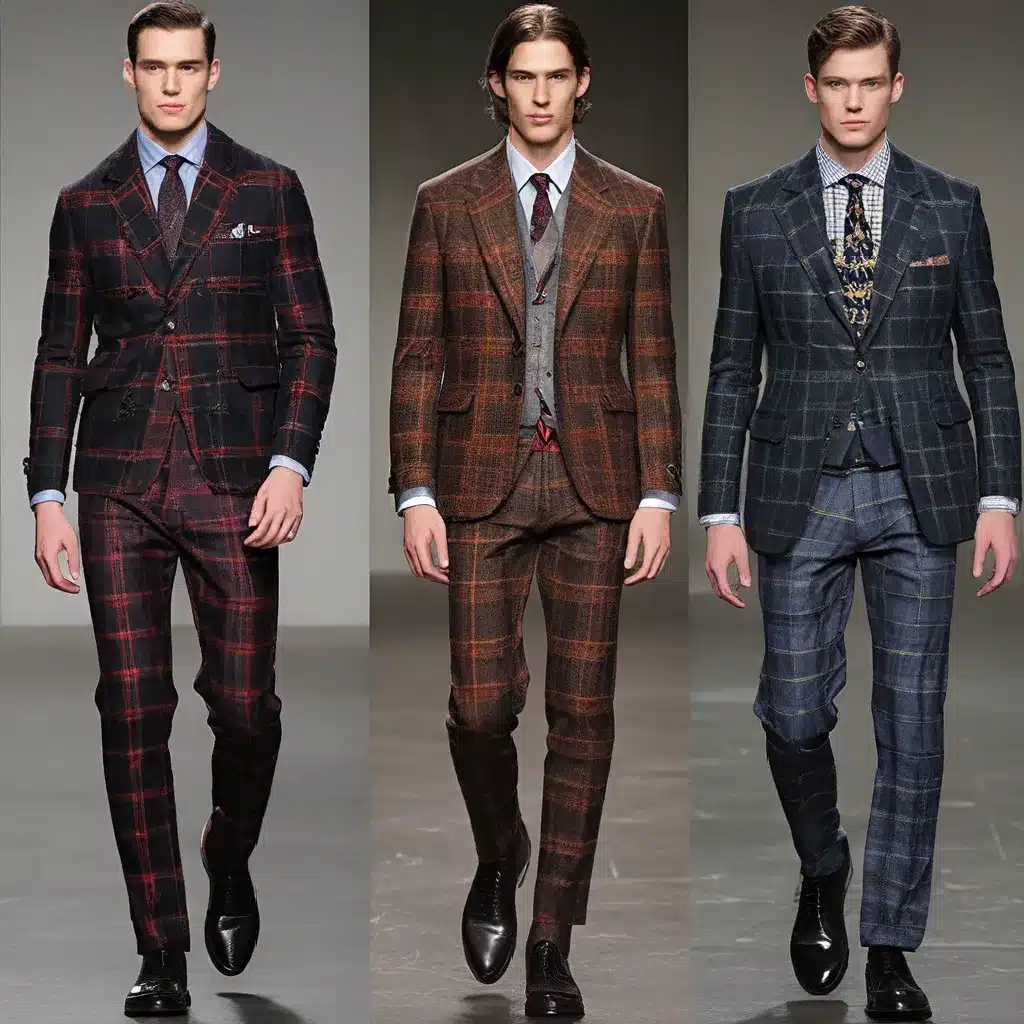
The Tartan Takeover
As I sit here sinking into the plush cushions of my brand new custom sofa, I can’t help but marvel at the striking tartan pattern adorning its surface. It’s bold, masculine, and commands attention – exactly the look I was going for when I commissioned this piece for my living room. You see, I’ve always had a soft spot for the rich history and undeniable style of plaid, tartan, and check fabrics. There’s just something about their linear, intersecting patterns that exudes an aura of rugged sophistication.
Growing up, I was surrounded by these classic textile designs. My family’s Scottish heritage ensured tartans were a staple in our household, from the wool throws we’d bundle up in during the chilly winters to the kilts my grandfather would don for special occasions. Even our furniture often featured tartan accents, giving every room a cozy, timeless feel.
Perhaps it’s nostalgia that’s fueled my lifelong love affair with plaids and checks. Or maybe it’s the way they seamlessly blend tradition with modernity, working equally well in rustic country retreats and contemporary urban lofts. Whatever the reason, I’ve found myself drawn to these patterns time and time again, incorporating them into my wardrobe, my home decor, and now, the custom sofa that’s the centerpiece of my living space.
Unraveling the Roots of Tartan
To fully appreciate the enduring appeal of tartan, plaid, and check fabrics, it’s helpful to understand their origins and evolution. While these terms are often used interchangeably, there are some key distinctions between them.
Tartan, for instance, is a specific pattern consisting of criss-crossing horizontal and vertical bands in multiple colors. The origins of this distinctive design can be traced back to ancient Celtic populations in Central Europe, who produced textiles bearing similar woven patterns. It wasn’t until the 17th century that tartan truly became associated with Scotland, as different clan groups began to adopt their own unique color combinations to distinguish themselves.
The term “plaid,” on the other hand, refers more broadly to any heavy piece of woolen cloth, often with a tartan pattern. Derived from the Gaelic word “plaide” meaning “blanket,” plaids were originally worn as cloaks or wraps to keep warm during the harsh Scottish winters.
Checks, meanwhile, have a more straightforward design – a symmetrical pattern of intersecting vertical and horizontal lines that form equal-sized squares. While they may share some visual similarities with tartans, checks are typically considered a distinct textile motif, often associated with a more modern, streamlined aesthetic.
Interestingly, the terms “tartan” and “plaid” are sometimes used interchangeably, even by high-end design houses. This blending of terminology is a testament to the way these patterns have become deeply intertwined in our collective cultural consciousness.
Tartan’s Timeless Allure
Despite their sometimes dizzying array of names and origins, there’s no denying the enduring appeal of tartan, plaid, and check fabrics. These classic patterns have managed to transcend time and trends, finding a home in everything from cozy country cottages to sleek urban lofts.
Part of their universal charm lies in the way they effortlessly bridge the gap between tradition and modernity. Tartans, in particular, evoke a sense of old-world heritage and rugged masculinity, harkening back to their Scottish roots. Yet, when executed with a contemporary color palette or paired with clean-lined furniture, they can feel surprisingly fresh and on-trend.
Sofa Spectacular, the custom furniture company I’ve entrusted with outfitting my living room, understands this duality all too well. Their designers have mastered the art of blending time-honored textile motifs with modern silhouettes and finishes, creating pieces that feel both instantly familiar and undeniably stylish.
It’s this versatility that makes tartans, plaids, and checks such a perennial favorite in the world of home decor. Whether you’re going for a cozy, rustic vibe or a more polished, masculine aesthetic, these patterns can be easily adapted to suit your personal style.
Tartan Transformations
Of course, not all tartans, plaids, and checks are created equal. The way these patterns are executed – from the scale of the design to the color palette employed – can vastly impact the overall look and feel of a space.
Take, for instance, the more traditional tartan designs often associated with Scottish heritage. Characterized by their bold, intersecting bands of deep, saturated hues like royal blue, forest green, and rich burgundy, these classic tartans exude an undeniably masculine, almost regal energy. They work beautifully in moody, wood-paneled studies or cozy, fireside living rooms, where their dramatic flair can truly shine.
On the flip side, softer, more muted interpretations of tartan and plaid can lend a surprisingly airy, almost feminine touch to a space. By opting for a color palette of soothing pastels – think duck egg blues, dusty pinks, and pale grays – designers can create a sense of relaxed sophistication that’s perfect for modern bedrooms or sun-drenched sitting rooms.
As Nell Hills notes, “The focus on home as a place of retreat has seen a range of customers decorating with more pastel colors. Tartans and plaids especially are often viewed as particularly heavy patterns, but a soothing color palette can alleviate this. Soft shades of duck egg, baby blue, gray, and off-white will maximize light and create an airy feel in your home.”
And when it comes to checks, the possibilities are endless. Whether you favor the bold, graphic impact of a large-scale windowpane pattern or the more understated elegance of a delicate gingham, there’s a check design to suit any aesthetic. These linear motifs work especially well in contemporary settings, where their clean lines and symmetry can balance out more ornate furnishings or architectural details.
Tartan Meets Trend
While tartans, plaids, and checks may feel like timeless, traditional patterns, they’re far from immune to the whims of fashion and design trends. In fact, these classic textiles have a knack for seamlessly adapting to the ever-evolving landscape of interior decor.
Take, for example, the recent surge in popularity of rich, jewel-toned color palettes. Nell Hills notes that “rich jewel-like colors such as red and royal purple are seriously on-trend at the moment. It goes without saying that tartans, plaids, and checks are suited to these bold, saturated hues.”
By pairing a tartan sofa or plaid curtains with accents of deep crimson, amethyst, or sapphire blue, you can create a look that’s both timelessly sophisticated and undeniably au courant. The addition of unexpected pops of color, like teal or turquoise, can also lend a modern, eclectic twist to these classic patterns.
Conversely, tartans and plaids have also proven their ability to seamlessly incorporate more pared-back, minimalist design elements. Nell Hills suggests that “the linear nature of tartans, checks, and plaids lends itself well to modern, angular furniture. A bold statement can be made by applying an especially busy fabric to a paired-back sofa or footstool design.”
By balancing the inherent busyness of tartan or plaid with clean-lined, modern silhouettes, you can create a look that feels refreshingly contemporary, without sacrificing the inherent charm of these beloved textile motifs.
A Tartan Takeover
As I sit here, sinking deeper into the sumptuous cushions of my custom tartan sofa, I can’t help but feel a sense of pride and satisfaction. This piece isn’t just a beautiful addition to my living room; it’s a testament to my lifelong love affair with plaids, tartans, and checks.
From the rich heritage of tartan’s Celtic origins to the enduring appeal of check’s clean-lined elegance, these patterns have woven their way into the fabric of my life. They’ve provided me with a tangible connection to my family’s past, while also allowing me to express my own modern, masculine sensibilities.
And now, with Sofa Spectacular’s help, I’ve been able to bring this passion project to life, creating a custom piece that perfectly encapsulates my design aesthetic. As I run my hand over the velvety smooth tartan upholstery, I can’t help but marvel at the way this timeless textile has been transformed into a truly one-of-a-kind statement piece.
Whether you’re drawn to the regal drama of a classic tartan or the understated sophistication of a gingham check, I encourage you to embrace these beloved patterns in your own home. With a little creativity and an eye for trend-forward execution, you too can elevate the humble plaid into a true design masterpiece.
So go ahead, let your inner Scotsman – or Scotswoman – shine through. Slip on a tartan throw, drape your windows in plaid curtains, or, like me, commission a custom tartan sofa that will be the envy of all your guests. After all, when it comes to these time-honored textile motifs, the only limit is your imagination.


